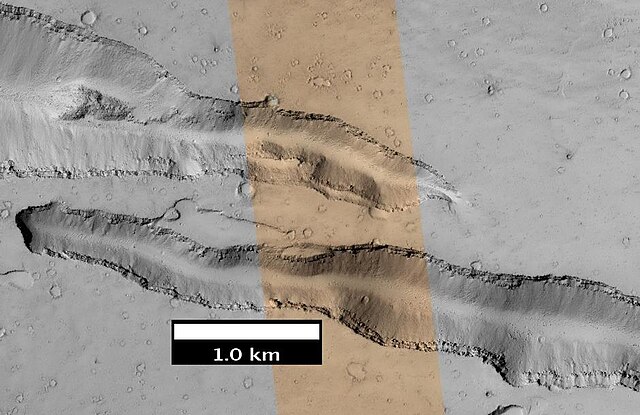Hecates Tholus is a Martian volcano, notable for results from the European Space Agency's Mars Express mission which indicate a major eruption took place 350 million years ago. The eruption created a caldera 10 km in diameter on the volcano's western flank.
2001 Mars Odyssey THEMIS daytime infrared image mosaic
Hecates Tholus topography.
Hecates Tholus ridges, as seen by HiRISE. Ridges are to the west-northwest of Hecates Tholus. It has been proposed that this region was affected by a volcanic eruption that occurred under a 200 meter-thick ice sheet.
Elysium (volcanic province)
Elysium, located in the Elysium and Cebrenia quadrangles, is the second largest volcanic region on Mars, after Tharsis. The region includes the volcanoes Hecates Tholus, Elysium Mons and Albor Tholus. The province is centered roughly on Elysium Mons at 24.7°N 150°E. Elysium Planitia is a broad plain to the south of Elysium, centered at 3.0°N 154.7°E. Another large volcano, Apollinaris Mons, lies south of Elysium Planitia and is not part of the province. Besides having large volcanoes, Elysium has several areas with long trenches, called fossa or fossae (plural) on Mars. They include the Cerberus Fossae, Elysium Fossae, Galaxias Fossae, Hephaestus Fossae, Hyblaeus Fossae, Stygis Fossae and Zephyrus Fossae.
High-resolution THEMIS daytime infrared image mosaic of Elysium from 2001 Mars Odyssey.
Hecates Tholus, as seen by THEMIS.
Albor Tholus, as seen by THEMIS.
Troughs to the east of Albor Tholus, as seen by HiRISE under the HiWish program






